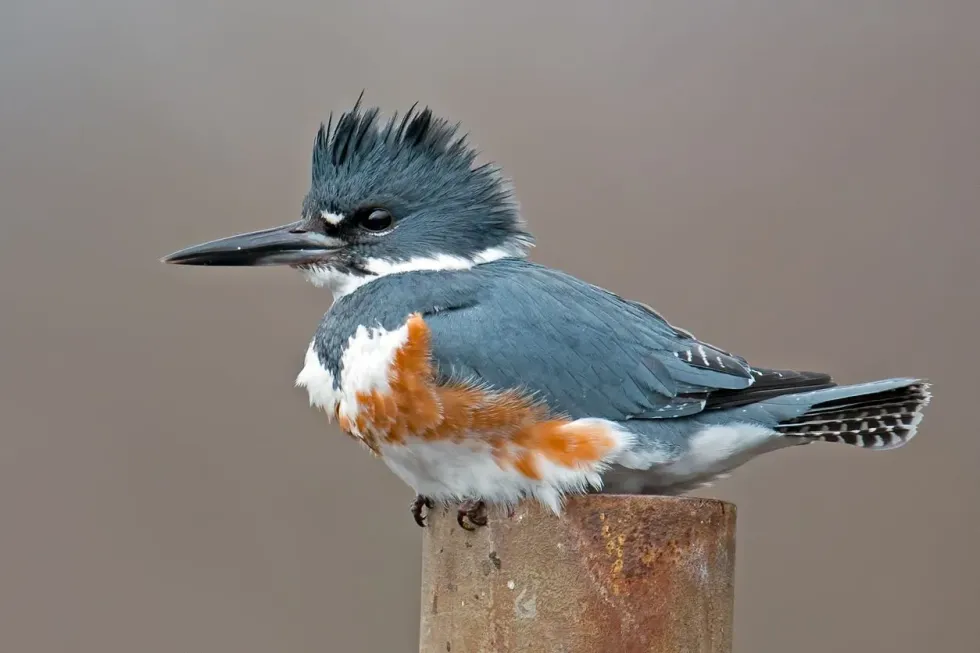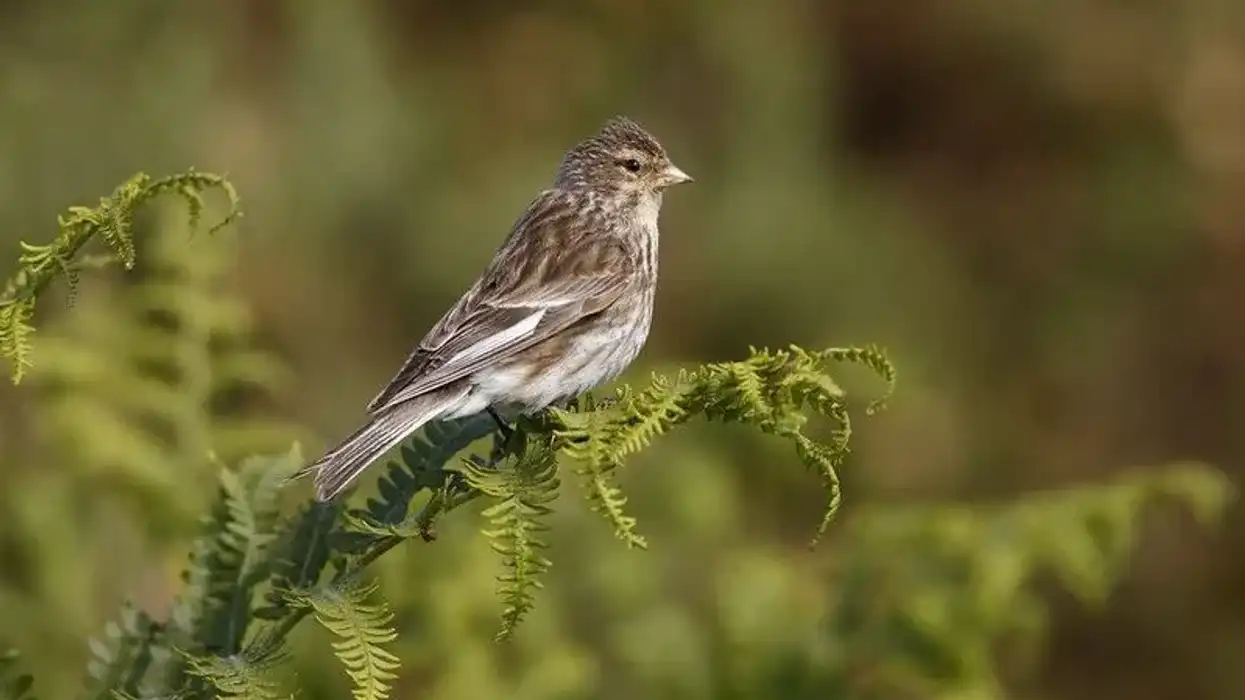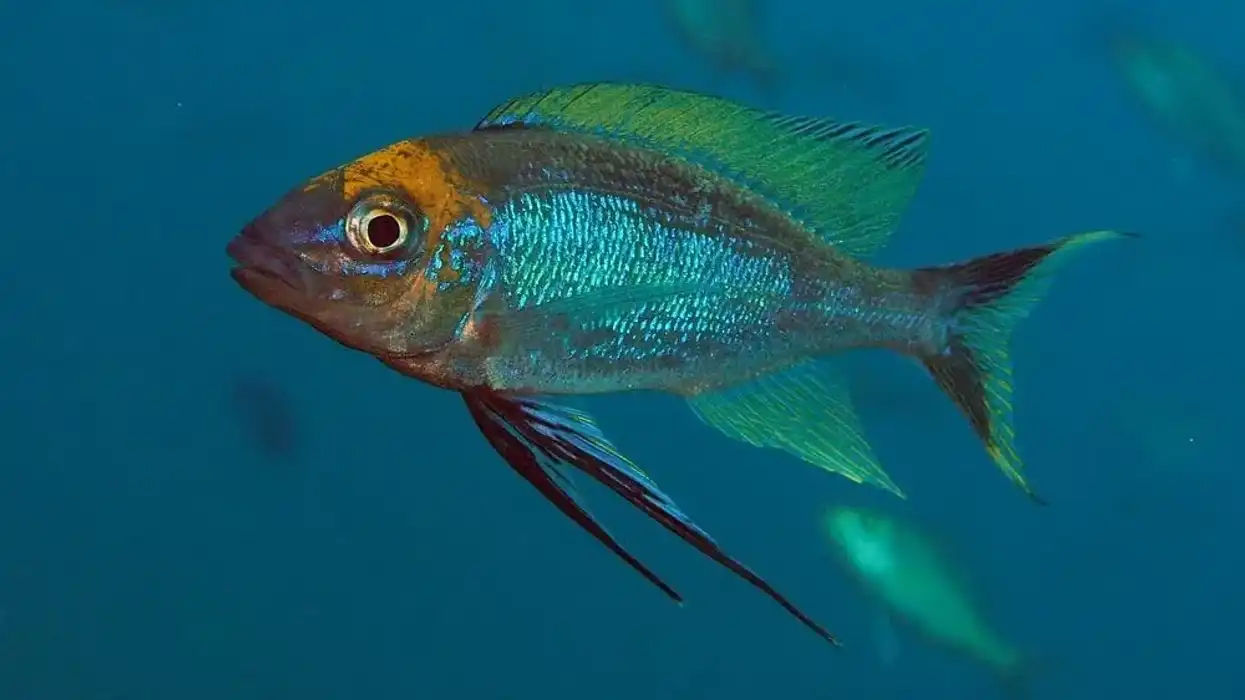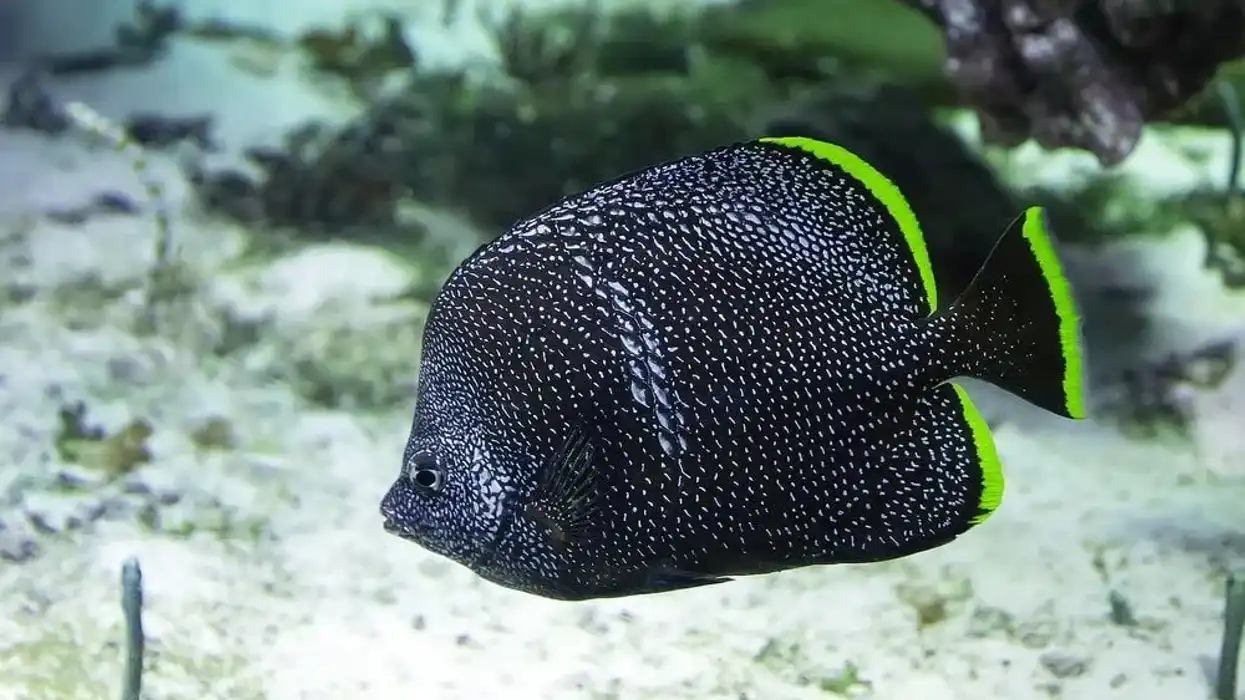If you are interested in colorful fisher birds, then this article on interesting facts about the Belted Kingfisher will surely excite you.
The Belted Kingfisher bird is a species of Kingfishers, from the Megaceryle genus of the Alcedinidae family. They have a comparatively larger head than their body, much unlike most of the other birds in North America. Their body is covered with stale blue feathers with a white collar and a rusty brown band on female birds.
They live in streams, rivers, lakes, and also near railway tracks, gravel pits, and fisheries. They prefer the water clean enough to spot their prey fish. They are spotted throughout North America, Central America, northern Canada, Mexico, and more.
In short, they are distributed throughout the Nearctic region. Their species tend to fly to warmer ranges during winter.
For example, most North American birds travel to central American ranges in winter. Their diet includes small fish, crayfish, and rarely small mammals or mollusks. Within their territory, they fly 10-15 in above the waterbody and prey on fishes, including trout fish and more.
Belted Kingfishers live solitary lives, however, they form a pair before the beginning of the breeding season. They protect their breeding territory with all their power during the breeding season.
To learn more, we have collected a set of interesting facts about Belted kingfishers for you to read. You can also learn more about fascinating wild animals and birds by reading up more articles on western tanager and eastern towhee.
Belted Kingfisher Interesting Facts
What type of animal is a Belted Kingfisher?
The Belted Kingfisher is a fish-eating, water Kingfisher bird, of the Megaceryle genus. They also go by the name 'Cerylid Kingfishers'.
What class of animal does a Belted Kingfisher belong to?
A Belted Kingfisher bird belongs to the Alcedinidae family of Aves class in the Animalia kingdom.
How many Belted Kingfishers are there in the world?
The total breeding population of Belted kingfishers is estimated to be 1.7 million. According to The New Mexico Avian Conservation Partners, the total strength of their population is 2,200,000 birds.
Where does a Belted Kingfisher live?
Belted Kingfishers are spotted throughout the Nearctic region. It includes Northern Canada, Alaska, Greenland, Mexico, Central America, and North America. Their geographical range extends to Panama, in the South.
What is a Belted Kingfisher's habitat?
They prefer inland bodies of water, coastal area, and forests of the Nearctic region. Water bodies, surrounded by forests, such as lakes, ponds, and river banks are their ideal habitat.
Not only near the water bodies, but they can also reside near railway tracks, roads, electric poles, and sand and gravel pits as well. They have their particular preference for clear waters.
For example, the water body should be clear enough to spot its' prey easily, as fish is their primary diet. They also require higher perches for the same reason.
They migrate to warmer southern parts of their range during harsh winters. Most of their population travels to the West Indies, Mexico, and parts of Central America.
They can also end up in Clarion Island, Malpelo Island, Cocos Island, and Hawai. Their migration depends on the weather and availability of prey as well.
Even in winters, if the water bodies of their range are not frozen, few of them may remain in their northern territories only, and abandons the thought of traveling far south (except for Arctic regions though).
Who do Belted Kingfishers live with?
Belted Kingfishers are known as solitary birds. They live and hunt alone. However, they form a breeding pair during the breeding season.
How long does a Belted Kingfisher live?
The average lifespan of Belted Kingfisher birds is around 14 years.
How do they reproduce?
Male Belted Kingfishers start preparing for the breeding season from February. They prepare a breeding range with 0.4-0.7 miles (0.8-1.2 km) of shoreline. They do it to attract females to pair with. They finish the preparations one month before females' return from their winter territory. However, they work side by side during nesting and protecting the breeding territory.
The pair build up the nest with protected chambers or cavities to lay eggs and raise their chicks. They build their nest with straws, twigs, grass, and feathers. The breeding season takes place between April and July.
It depends on the weather of that area though. The average litter size is five-eight eggs per season, and chicks hatch out of their eggs after 23-24 days. The hatchlings gain independence to step out of their nests after six weeks, and they gain their sexual maturity at the age of one.
What is their conservation status?
Belted Kingfishers are not endangered. They are living happily with a stable population strength, across their ranges. They are labeled as a 'Least Concern' species by the International Union For Conservation of Nature (IUCN) Red List. They are even protected by the Migratory Bird Treaty Act (MBTA).
Belted Kingfisher Fun Facts
What do Belted Kingfishers look like?

Belted Kingfishers have a comparatively larger head than any birds of the same length. Female Belted kingfishers are usually larger than a male. Their body is covered with a combined pattern, made of slate Blue, white, and rusty brown feathers.
However, their thigh bone isn't covered with feathers, and they have small feet. They have a white underbelly and a white-collar.
Female Belted Kingfisher birds are more colorful than male Belted Kingfisher. Females have a rusty brown band on their underbelly and a heft bill. However, males of some species are even more gorgeous than females.
How cute are they?
Belted Kingfishers are one of the most beautiful birds of the Alcedinidae family. The beautiful color scheme and adorable structure of these birds make them cute enough to melt hearts!
How do they communicate?
Belted Kingfishers are known to be very vocal birds. They express emotions and announce territories by making various sounds. They can use a combination of six different calls.
While announcing or protecting their territories, they make loud, high-pitched calls. Their chatter a lot, and ornithologists consider it as a giveaway from them. You can hear their rattling call before you even spot them.
How big is a Belted Kingfisher?
The average length of Belted Kingfisher birds is 11-13.8 in (28-35 cm). The laughing Kookaburra is known to be the largest Kingfisher species. They are nearly twice the size of a Belted Kingfisher.
How fast can a Belted Kingfisher fly?
Belted Kingfishers are known to be amazing flyers. They display immense flying capacity and stamina while chasing away predators or intruders from their breeding territory.
They can fly at a speed of 36 mph (58 kph). To catch fish from the river they fly at 10-15 in above water level. Biologists have observed that they can fly over the bends of streams and rivers with ease while maintaining their top speed.
How much does a Belted Kingfisher weigh?
The average weight of these birds is 4.9-6 oz (140-170 g). The heaviest known Belted Kingfisher was 16.4 oz (465 g) in body mass.
What are their male and female names of the species?
Female Belted Kingfishers are called hens, and males are called cocks.
What would you call a baby Belted Kingfisher?
A baby Belted Kingfisher bird is known as chicks.
What do they eat?
Belted kingfishers are carnivorous birds. Their main prey is small fishes, who are 1.5-5.5 in (4-14 cm) in length, and crayfish. The diet of these birds includes trout fish, sculpins, sticklebacks, and more.
They are opportunist predators. Their hunting area is lakes, ponds, streams, rivers, and even coastal areas with clean water. In the scarcity of fishes, they can eat small mammals as well.
Are they dangerous?
Kingfishers are not dangerous at all to humans. They mostly live in water bodies, surrounded by forests. They may swoop at you if they feel threatened.
However, they may cause real harm to people who own fish hatcheries! They are known for catching fishes from the hatcheries.
Would they make a good pet?
They do not make good pets. They are wild animals and it's very difficult to train them. It's illegal in various states to own one.
Did you know...
The male Belted Kingfisher bird makes banks in the breeding range for nesting. The banks are located near water. Steeper banks also act as a protective shield from predators and floods.
Their heavy bills help them in preying, as they put their head first in the water to catch a fish.
They perform loud rattling calls while flying over rivers and other water bodies.
Most North American birds of their species, spent their year half in North America, a quarter in Canada, and the winter in Mexico. North America is considered one of the best ranges for their species, with plenty of lakes and rivers.
The Belted Kingfisher's call
Belted kingfishers' rattling call is fascinating to hear. They can call with combinations and variations of six different calls. When threatened they make strident rattles or harsh calls. The call of the Belted kingfisher sounds like mechanical noises.
Symbolism of the Belted Kingfisher
The Belted Kingfisher bird made its place on the Canadian five dollar bill, for the 1986 series.
It is said that the first bird that flew from Noah's ark was a Kingfishers from the Halcyon genus. It is considered a symbol of hope, love, and prosperity. Kingfisher birds also symbolize the increase of inner spiritual activity.
Here at Kidadl, we have carefully created lots of interesting family-friendly animal facts for everyone to discover! Learn more about some other birds including painted bunting, or house finch.
You can even occupy yourself at home by drawing one on our Belted Kingfisher coloring pages.










